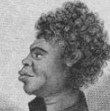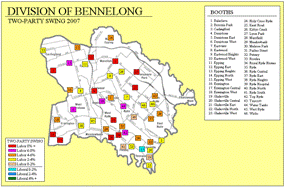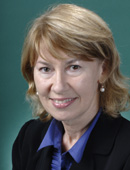
Hon Maxine McKew (ALP)
Her ministerial website and
her electorate website
|  |
Location: Sydney: Eastwood, Epping, Meadowbank, Ryde
Division named for: Bennelong, an Indigenous man
befriended by Governor Phillip
Median weekly family income: $1,288 (18th highest)
Persons born in non English speaking countries: 28.3% (17th highest)
Persons in professional occupations: 37.4% (17th highest)
Persons aged 65 and over: 14.4% (46th highest)
Couple families with dependent children: 40.8% (43rd highest)
Dwellings being purchased: 20.4% (124th highest)
Sitting member: Hon Maxine McKew (Labor),
elected 2007
Born: 22 July 1953, Brisbane. Career: Journalist, Australian Broadcasting Corporation 1976-2006.
Parliamentary Secretary for Early Childhood Development and Child Care from 3 December 2007
1996 two-party majority: Liberal 10.1
1998 two-party majority: Liberal 06.0
Effect of 2001 redistribution: 00.8 shift to Labor
2001 two-party majority: Liberal 07.8
2004 two-party majority: Liberal 04.3
Effect of 2006 redistribution: 00.3 shift to Labor
2007 notional two-party majority: Liberal 04.0
2007 two-party majority: Labor 01.4
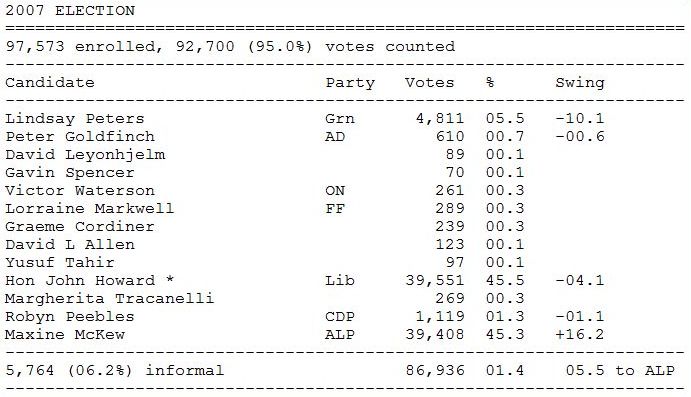
2004 enrolment: 86,220
2007 enrolment: 97,573 (+13.2%) (new boundaries)
Bennelong was created in 1949 and had only two members in its first 58 years: Sir John Cramer (Liberal) 1949-74 and
John Howard (Liberal) 1974-2007. Howard was Leader of the Liberal Party 1985-89 and 1995-2007, and was
Prime Minister 1996-2007. For most of that time Bennelong was usually safe for the Liberals, although Labor came close to beating
Cramer in 1961 and again in 1972. Since 1977 it has been steadily shifted westwards by successive redistributions, losing prime
Liberal territory in Lane Cove and Hunters Hill and gaining marginal or Labor-voting areas further west. The 2006
redistribution added three Labor booths in Ermington, again slightly weakening Howard's position. More important has been
demographic change, as Ryde and
Gladesville have become less reliably Liberal, and as migrants have moved into the area. Bennelong has the unusual
combination of high median family incomes and a high proportion of people born in non English speaking countries: by 2007 it
had the highest
proportion of such people of any Coalition-held seat - and this is usually
strongly indicative of support for Labor. Many of these migrants are people from Asian countries who are in professional
occupations. Howard's majority in 1977 was 13.4%: by 1993 it was 3.2% and in 1998 5.1%. In 2004 Howard suffered a 3.5% swing,
mainly because of a strong campaign waged by Greens candidate
Andrew Wilkie
over the Iraq War. In 2007 Howard was finally defeated by a high-profile
Labor candidate, former ABC journalist
Maxine McKew, becoming the first Prime Minister since
Stanley
Bruce in 1929 to lose his seat. Bennelong is still a fairly homogenous seat, with few booths producing two-party
majorities over 55% for either side. Labor polled over 60% of the two-party vote only at Ermington West, Lyon Park and
Meadowbank, the Liberals only at Gladesville West, where Howard got 61%. After the election McKew was appointed a
parliamentary secretary. Her high personal profile, the loss of Howard's personal vote, and the underlying trend in the seat
all mean that Bennelong will be a difficult seat for the Liberals to regain on its current boundaries.
|  | |
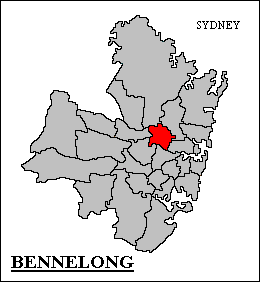
|
